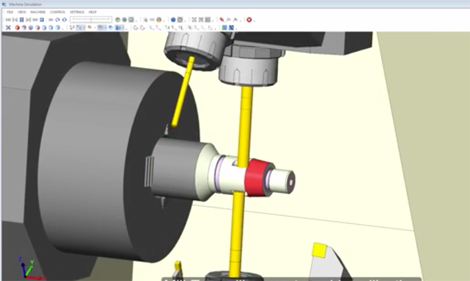
New features in Mastercam X8 look to improve productivity
Mastercam is looking to improve shop floor productivity with its latest release of X8 Mill, adding in new features to boost machining flexibility and speed.
‘Dynamic Motion Technology’ is the software’s latest approach to creating toolpaths, promising a proprietary set of rules to analyse tool engagement and material removal, constantly changing the cut motions based on what the tool will encounter at the machine, optimising the motion before the first chip is cut.
The aim is for radically shorter cycle times when machining, coupled with less deterioration and breakage of tools, and reduced wear on machines.
A new strategy added for X8 is multi-axis roughing, giving the ability to create pocketing toolpaths to rough out pockets that have a curved floor surface.
It supports offset or dynamic style strategies, and multiple depth floors.
Mastercam’s 2D High Speed Toolpaths (HST) now support multi-core processing on toolpaths with multiple machining regions.
2D HST Dynamic Mill has added first pass feed reduction and first pass offset to the cut parameters page, allowing for safer motion when the tool is entering material from the outside.
It also expands the machining region to ensure the tool does not engage a lot of material on the very first pass due to an unknown exact block size.
Region chaining has been simplified to machining region selection, allowing for single or multiple regions.
Additionally, other new improvements include:
– New air region chains define safe air the tool can move within via closed chains
– Users can now adjust feeds and speeds on the multi-passes page, making it easier to control your tool motion. In addition, corner rounding support is added in ramp and oscillate modes
– 3D high speed toolpaths based on Z-level cuts now process Z stepdowns across multiple cuts
– Tilt away to avoid collision options are added in 3D HST finishing toolpaths and provide an easy-to-use introduction to 5-axis technology
– Productivity+ enhancements such as support for extended character languages and added graphic selection for calibration point position






